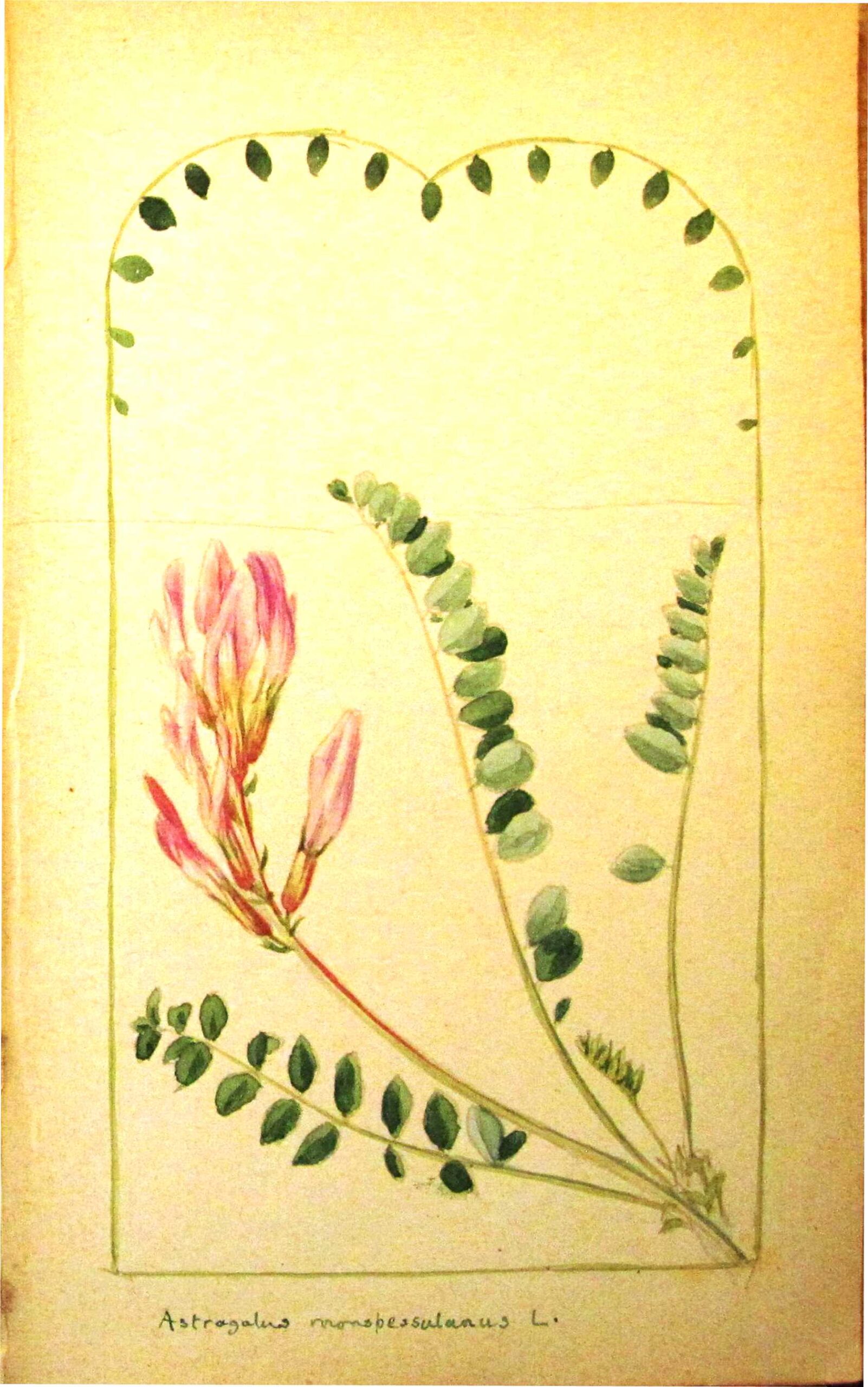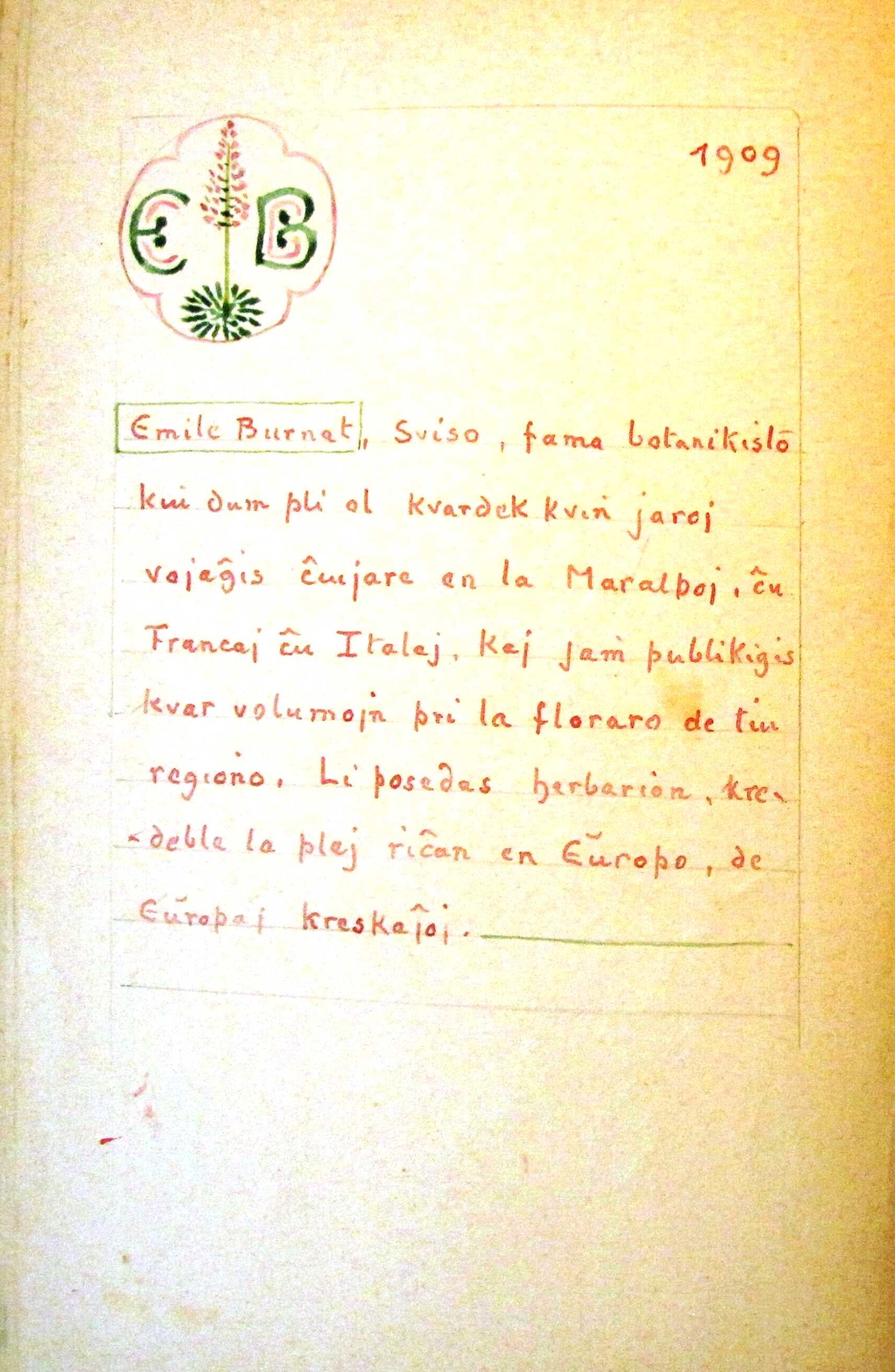
Watercolour by Clarence Bicknell of Astragalus monspessulanus (genus Astragalus), native to S. Central & S. Europe to W. Ukraine, NW. Africa. Conservation; Rare. Habit; Perennial; Not climbing. Vernacular; “Astragal Monpeliski”, and, in French, “Tragant”.
Very little is given about this wild flower in the normal sources, so let’s talk about the man to whom Clarence dedicated this flower and his drawing of it in the Book of Guests in Esperanto. Clarence wrote in this small vellum-bound album his notes in Esperanto on guests who had spent the night in the Casa Fontanalba, including four dogs. Each left-hand page shows notes on a guest in coloured ink with their initials illuminated; the right-hand page shows a watercolour of a flower found nearby, sometimes relevant to the person. We have transcribed and published it on our web site clarencebicknell.com
https://clarencebicknell.com/wp-content/uploads/book_of_guests_in_esperanto_with_english_translation.pdf
This page of the book, opposite Clarence’s drawing of Astragalus in a matching frame, features his good friend Émile Burnat. Clarence describes the man perfectly, in Esperanto, which reads as follows in English… “Emile Burnat, Swiss, a famous botanist who for more than forty-five years has travelled every year in the Maritime Alps, both French and Italian, and has already published four volumes on the flora of that region. He owns a herbarium, probably the richest in Europe, of European plants”. Burnat and his caravan were Bicknell’s guests at the Casa Fontanalba, his summer home in Val Castérino, on 27 July 1909. In a separate guest book the signature of Emile Burnat is accompanied by the names of his son Jean Burnat, John Briquet, François Cavillier, and Emile Abrezol (an assistant at the botanical garden). Burnat’s autobiography (pages 141-2) gives the following summary of the 1909 excursion: ‘Du 21 juin au 30 juillet, voyage botanique de MM. E. Burnat, J. Briquet, A. St-Yves, E. Wilczek, Fr. Cavillier, E.-S. Abrezol, J. Lascaud et le guide Th. Fabre de St-Etienne de Tinée : Nice – St Martin Vésubie – Madonna delle Finestre – col delle Finestre – Entraque – Valdieri ville – Roaschia – val Sabbione (campé) – val Casterino – St Dalmas de Tende – Turin – Simplon – Vevey’
You can read about Clarence’s hundreds of letters to Burnat in the paper by Graham Avery – “Cher Monsieur”, Letters from Clarence (1886-1917) – at https://clarencebicknell.com/wp-content/uploads/burnat_letters_from_bicknell.pdf. We cannot find a reference to Astralagus in the letters but a sub-species of the flower is named after Burnat (Astragalus hypoglottis subsp. gremlii Burnat), so he must have had a special interest in the flower. Clarence found Astragalus monspessulanus in the mountains round Casterino so putting it on Burnat’s page was a nice gesture of respect.
No.37 in our weekly series of drawings by our favorite Victorian artist, botanist and archaeologist.


